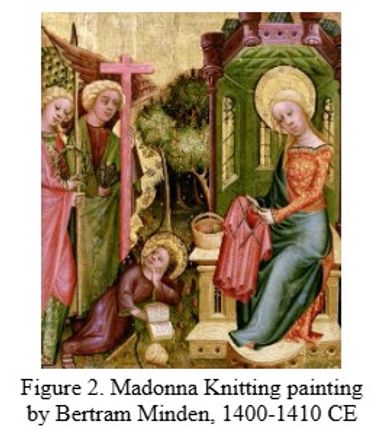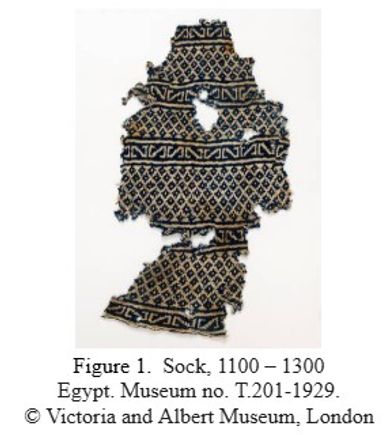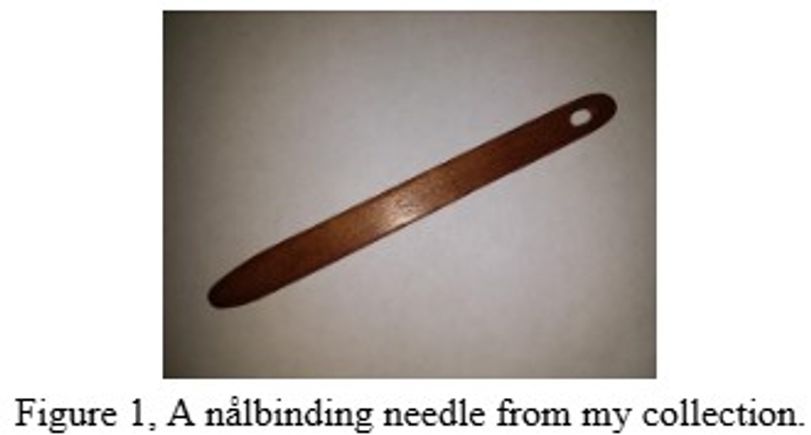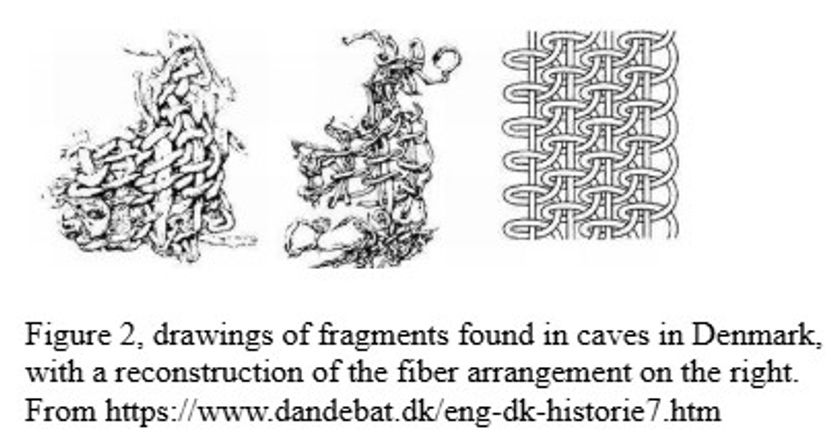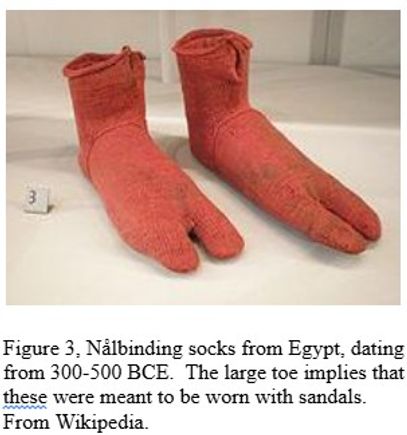History of Knitting I
The History of Knitting I (originally published in the Latimer's Loose Threads, Issue 68 by Marilyn Roossinck
Who started the amazing tradition of knitting? So far this is an unsolved mystery. The practice was almost certainly a strictly oral tradition for centuries before any written records. Because there are no goddesses of knitting in ancient legends, as there are for spinning and weaving, it is likely that knitting is not an ancient tradition. However, fiber arts are not well preserved in the archeological record, and ancient samples of knitting, like other textiles, would have been easily lost. Knitting needles are not found in ancient ruins either, or at least pointed sticks that have clearly been identified as knitting needles. It is quite possible that they have been found, but attributed to other uses. Given that women are recent additions to the interpretation of the archeological records, previous scholars may not have thought of knitting, and attributed pointy sticks to other uses, like skewers.
A history of the word knitting can give us some clues about knitting in England. Bear in mind that the first English dictionaries did not appear until the very end of the 16th century, so finding references to the use of words before that can be somewhat obscure. The first appearance of the word "knitting" appears in English in the late 14th Century, where it was defined as "a fastening with a rope or thread". After a pretty big gap, in the mid 15th Century we find a reference to a "knitter" as one who does knitting work, although the surname "Knitter" is found from around 1300. By 1520 we have a definition of "knit" as do knitting, weave by looping or knotting a continuous thread, and "knitting-needle" appears in the 1590s. By 1711, when dictionaries were more established, we find the meaning for knitting as "the act of weaving a continuous thread by loops or knots" in a dictionary. The word knitting itself seems to be drawn from the middle German word "knütten", also meaning to knot, so the early use of the surname could refer to knotters rather than knitters1.
Who started the amazing tradition of knitting? So far this is an unsolved mystery. The practice was almost certainly a strictly oral tradition for centuries before any written records. Because there are no goddesses of knitting in ancient legends, as there are for spinning and weaving, it is likely that knitting is not an ancient tradition. However, fiber arts are not well preserved in the archeological record, and ancient samples of knitting, like other textiles, would have been easily lost. Knitting needles are not found in ancient ruins either, or at least pointed sticks that have clearly been identified as knitting needles. It is quite possible that they have been found, but attributed to other uses. Given that women are recent additions to the interpretation of the archeological records, previous scholars may not have thought of knitting, and attributed pointy sticks to other uses, like skewers.
A history of the word knitting can give us some clues about knitting in England. Bear in mind that the first English dictionaries did not appear until the very end of the 16th century, so finding references to the use of words before that can be somewhat obscure. The first appearance of the word "knitting" appears in English in the late 14th Century, where it was defined as "a fastening with a rope or thread". After a pretty big gap, in the mid 15th Century we find a reference to a "knitter" as one who does knitting work, although the surname "Knitter" is found from around 1300. By 1520 we have a definition of "knit" as do knitting, weave by looping or knotting a continuous thread, and "knitting-needle" appears in the 1590s. By 1711, when dictionaries were more established, we find the meaning for knitting as "the act of weaving a continuous thread by loops or knots" in a dictionary. The word knitting itself seems to be drawn from the middle German word "knütten", also meaning to knot, so the early use of the surname could refer to knotters rather than knitters1.
Knitted textiles are found much earlier than the use of the words in England. The oldest true knitted garments are cotton socks from Egypt, from around 1000 CE (Figure 1). The designs on these socks are very sophisticated, and include a form of Arabic script called "Khufic". This implies that by the time these socks were made the art of knitting was very advanced, and probably had been in use for some time already. The general thinking now is that knitting originated in the middle east, and traveled first to Spain with the Moors, and then throughout Europe (Figure 2). The middle-eastern origin is supported by the fact that we knit from right to left, as one would read Arabic, rather than left to right as all European languages are read, as pointed out by Julie Theaker in an article in Knitty.com2. Some of the items from Egyptian remnants of knitted items show the use of the purl stitch, but it seems to have been lost when knitting moved to Europe. The first purl stitches in Europe are not found until the mid-16th Century.
There are a number of variations and precursors to knitting, some of which are still in use today. These will be the subjects of future articles, along with more details about the transmission of the knitting arts to and throughout Europe, and eventually to the Americas that had early pre-Columbian knitting-like traditions as well.
There are a number of variations and precursors to knitting, some of which are still in use today. These will be the subjects of future articles, along with more details about the transmission of the knitting arts to and throughout Europe, and eventually to the Americas that had early pre-Columbian knitting-like traditions as well.

